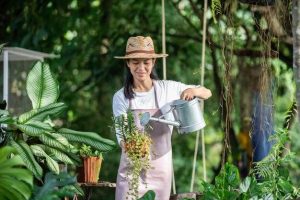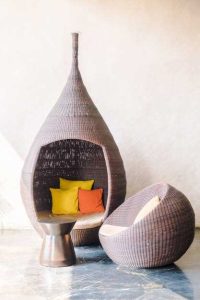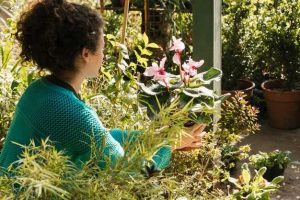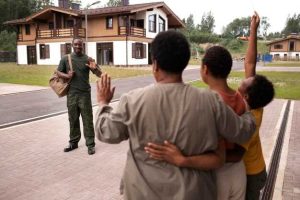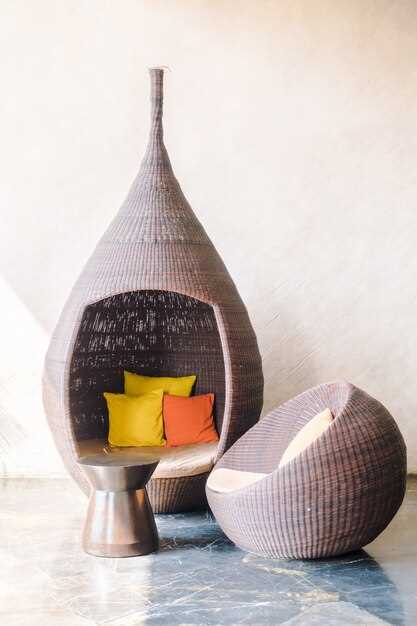
Interior Design Tips for Nicaraguan Homes: Blending Style and Comfort
Consider incorporating natural materials like bamboo and locally sourced wood into your home. These elements not only enhance the aesthetic appeal but also reflect the surrounding environment. Warm hues can evoke a sense of serenity while connecting your space to Nicaraguan heritage.
Choose furniture that combines comfort and functionality. Look for pieces with clean lines and simple designs that fit the relaxed lifestyle of Nicaragua. Opt for textiles that are breathable and easy to maintain, such as cotton or linen, to withstand the region’s warm climate while adding a touch of style.
Layering textures is key. Introduce woven rugs, ceramic ceramics, and handcrafted accessories to create depth in your space. Use plants, like the popular pothos or snake plant, to add life and a refreshing atmosphere. They thrive in various conditions and contribute to a welcoming environment.
Accentuate your home’s light and airiness with open space layouts. Arrange furniture to promote flow and communication among family members and guests. Large windows will brighten rooms and provide stunning views, allowing the beauty of nature to become part of your interior design.
Choosing the Right Color Palette for Nicaraguan Homes
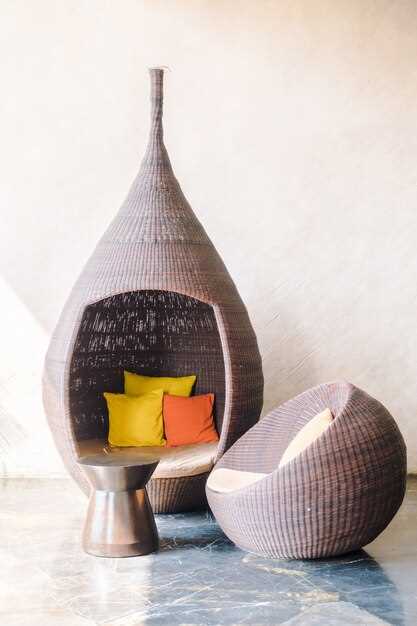
Opt for warm earth tones mixed with bright accents. Shades of terracotta, burnt orange, and soft yellows create a cozy atmosphere while reflecting Nicaraguan landscapes. Incorporate splashes of turquoise or cobalt blue to evoke the beauty of local lakes and oceans.
Incorporating Nature
Draw inspiration from the natural surroundings. Consider greens that mirror the lush vegetation found in Nicaraguan forests. Pair these with sandy beiges and light browns reminiscent of the beaches. This connection to nature not only invites tranquility but also ties interior spaces to the environment.
Accent Colors and Patterns
- Use bold patterns for accent walls or textiles. Bright floral or geometric prints can be a nod to traditional crafts.
- Mix in warm metallics like gold or brass through decor or light fixtures for an upscale touch.
- Consider using local artisan pieces that feature striking colors to add character and authenticity.
Test potential colors in different lighting conditions. Natural light brings out warmth and depth, while artificial light may alter perceptions. Create a color board to visualize combinations and ensure cohesion throughout the space. This thoughtful approach leads to a harmonious blend of style and comfort in your Nicaraguan home.
Incorporating Local Artisanship into Your Decor
Integrate handmade crafts into your living spaces for a warm and unique atmosphere. Focus on pieces that showcase Nicaraguan culture and craftsmanship. Here are some effective ways to do this:
- Utilize Pottery: Look for locally made ceramics that reflect traditional designs. Hand-painted bowls and vases can serve both functional and decorative purposes in your home.
- Support Weaving Artisans: Add handmade textiles like hammocks, rugs, or wall hangings. These items not only add color but also provide a cozy feel to any room.
- Incorporate Woodwork: Seek out furniture or decorative pieces crafted from native wood. Custom-made items often feature intricate carvings that tell a story and enhance your interior.
- Display Local Artwork: Invest in paintings or sculptures from local artists. This personal touch adds character and helps support the local art community.
- Choose Handcrafted Lighting: Consider unique light fixtures made by Nicaraguan artisans. These can serve as focal points while illuminating your space beautifully.
Combining these artisanal elements with your existing decor creates a harmonious blend of style and comfort, reflecting both personal taste and cultural heritage.
Designing Functional Outdoor Spaces in Tropical Climates
Focus on creating shaded areas using pergolas or awnings. These structures protect from the sun while providing a comfortable spot for relaxation. Consider incorporating climbing plants like bougainvillea or jasmine to enhance aesthetics and provide additional shade.
Select durable, weather-resistant furniture that can withstand moisture and humidity. Teak or synthetic wicker options are ideal. Arrange seating in a way that encourages social interactions, making the space inviting for gatherings with family and friends.
Incorporate natural elements such as stone pathways or wooden decks to connect indoor and outdoor areas seamlessly. Adding potted plants and tropical flowers creates a lush environment that complements the outdoor experience.
Plan for mixed-use areas, such as shaded dining sections equipped with outdoor lighting. Consider overhead fans to improve airflow, ensuring comfort during warm evenings. Use cushions and textiles made from quick-drying, UV-resistant materials to enhance comfort without sacrificing durability.
Integrate water features like fountains or small ponds to provide soothing sounds and a refreshing atmosphere. These elements also attract local wildlife, adding vibrancy to your outdoor space.
Incorporate multifunctional furniture, such as benches with storage, to maximize space. This approach helps keep the area organized while providing practical solutions for outdoor activities.
Finally, prioritize outdoor kitchens or bar areas to make the most of outdoor cooking and dining experiences. Equip them with grills, prep areas, and seating to create a culinary destination right in your backyard.
Maximizing Natural Light with Thoughtful Layouts
Position large windows in living areas to capture sunlight throughout the day. Consider creating open floor plans that encourage light to flow freely between rooms. Orient spaces to face the sun, especially in areas where family activities occur most frequently.
Use Light-Colored Finishes
Incorporate light-colored walls and ceilings to reflect natural light efficiently. Soft white, pale beige, or light pastels can brighten a room significantly. Complement these colors with reflective surfaces, such as glass or mirrors, strategically placed to bounce sunlight around the space.
Incorporate Skylights and Openings
Install skylights in key areas like kitchens and bathrooms to introduce direct overhead light. Use larger doorways that can be left open to connect indoor and outdoor spaces, enhancing the interplay of light. Sliding or folding doors can create a seamless transition, inviting in natural illumination and fresh air.
Finding Affordable Furniture that Reflects Nicaraguan Culture
Explore local markets in Managua and Granada to find unique, handcrafted pieces that represent Nicaraguan culture. Artisan markets often showcase colorful textiles and traditional designs, providing an authentic touch to your home.
Focus on wooden furniture made from native hardwoods like mahogany or cypress. Look for local craftsmen who create affordable tables, chairs, and cabinets. Investing in solid wood ensures durability while supporting local artisans in their trade.
Incorporate traditional hammocks, widely popular in Nicaraguan homes. They provide comfort and a touch of local flavor. Check out local vendors or online shops selling handwoven hammocks to find affordable options.
Decorate with local art and pottery. Seek out small artists in your area who create vibrant paintings or handcrafted ceramics. These pieces often come at reasonable prices and bring a unique aesthetic to your space.
Consider a DIY approach for some furniture pieces. Utilize local materials, like bamboo or reclaimed wood, to craft functional and stylish items. Look for online tutorials to guide you through the process, making it a fun weekend project.
| Furniture Type | Where to Find | Price Range |
|---|---|---|
| Wooden tables | Local artisan markets | $150 – $400 |
| Hammocks | Online or craft fairs | $40 – $100 |
| Local art | Art galleries or market stalls | $20 – $300 |
| DIY projects | Online resources | Varies |
Combine these elements for a warm and inviting living space that reflects the beauty of Nicaraguan heritage. Consult with local interior designers for additional insights on cultural integration into your home design.
Using Textiles to Add Warmth and Color
Incorporate colorful textiles like vibrant cushions and throw blankets to instantly infuse your Nicaraguan home with warmth. Choose fabrics that reflect local culture, such as handwoven cotton or wool from artisan markets. These elements not only add comfort but also tell a story about the region’s craftsmanship.
Selecting the Right Colors
Opt for bold hues often found in traditional Nicaraguan art. Bright oranges, deep blues, and lush greens can create a lively atmosphere. Mix and match patterns, but keep a cohesive theme to avoid visual chaos. Layering different textures creates depth and interest, making spaces feel more inviting.
Strategically layer textiles for added warmth. Use area rugs to define spaces and provide a soft underfoot feel. Drape decorative fabrics over furniture or hang them as wall art. This approach not only enhances comfort but also adds visual intrigue, bridging style with relaxation for a cozy home.
Creating a Flow Between Indoor and Outdoor Living Areas
Incorporate large sliding or folding doors to create seamless transitions between indoor and outdoor spaces. This architectural choice not only enhances accessibility but also invites natural light, creating an airy atmosphere.
Use Similar Materials and Colors
Select materials and color palettes that connect both realms. For instance, if you have wood accents inside, consider using similar wooden elements for outdoor furniture or decking. Soft, neutral colors can unify the areas, making them feel like an extension of one another.
Design Functional Zones
Establish purposeful areas by arranging outdoor furniture that complements indoor layouts. Consider a cozy seating nook outside mirroring your living room arrangement. This consistency helps maintain visual harmony while providing distinct areas for relaxation and entertainment.
Consider adding outdoor rugs or lighting to enhance comfort and usability in the evening. These additions make the outdoor space an inviting extension of your home, encouraging family gatherings and socializing.
Finally, integrating greenery, such as potted plants or vertical gardens, can further blur the lines between inside and outside. This not only beautifies the spaces but also enhances the overall ambiance, bringing a slice of nature into your everyday living experience.
Balancing Modern Trends with Traditional Elements
Incorporate local artisan crafts into modern decor. Handcrafted pottery, colorful textiles, or wooden sculptures can serve as striking focal points that connect contemporary designs with Nicaraguan heritage.
Opt for a neutral color palette for large furniture pieces while using bold, traditional colors in accents like cushions and rugs. This approach creates a serene backdrop, allowing cultural elements to stand out without overwhelming the space.
Mix geometric modern patterns with traditional motifs. For example, pair sleek coffee tables with cushions featuring indigenous designs. This blend adds depth and interest to the room while celebrating local culture.
Choose light, airy fabrics for window treatments that harmonize with traditional woven designs. Linen or cotton curtains offer a fresh look while allowing natural light to enhance textiles’ rich colors.
Incorporate greenery with potted plants to bridge modern minimalism and traditional gardening practices. Consider local species, integrating them into both outdoor spaces and interiors to evoke the Nicaraguan landscape.
Select furniture that combines modern lines with traditional craftsmanship. Look for pieces that feature local woods or handmade details to seamlessly integrate the two styles.
Lastly, balance the arrangement. Position contemporary art pieces alongside traditional wall hangings to create a dialogue between styles, ensuring that both modern and traditional elements coexist harmoniously in your home. This approach not only enriches your living space but also tells a story of cultural appreciation.
Implementing Eco-Friendly Practices in Your Home Design
Choose sustainable materials such as bamboo, reclaimed wood, or recycled metal for furniture and fixtures. These not only reduce the carbon footprint but also add unique character to your decor. Incorporate local artisan products to support the community and minimize transportation emissions.
Energy Efficiency
Integrate energy-efficient appliances that consume less electricity. Look for ENERGY STAR labels, which ensure optimal performance and sustainability. Use LED lighting throughout the home for lower energy consumption and longer lifespan. Consider installing solar panels to harness renewable energy and reduce utility costs.
Indoor Air Quality
Select low-VOC paints and finishes to maintain better air quality. Incorporate plants known for improving air quality, such as snake plants and peace lilies. These not only beautify your space but also help filter toxins, promoting a healthier indoor environment.
Design your home with ample natural light through large windows and skylights. This reduces the reliance on artificial lighting and enhances mood and comfort. Consider using window treatments made from organic materials to maintain privacy without sacrificing eco-friendliness.
For water conservation, install low-flow fixtures and consider a rainwater harvesting system. This approach reduces water waste and can be used for irrigation and other non-potable applications. Regular maintenance of these systems ensures optimal performance throughout their lifetime.
Selecting Durability in Materials for Coastal Living
Choose materials designed to withstand humidity, salt, and relentless sun. For flooring, opt for ceramic tiles or treated hardwood that resists moisture and scratches. These surfaces are not only durable but also easy to maintain, making them perfect for high-traffic coastal homes.
Recommended Materials
For cabinetry and furniture, consider marine-grade plywood or teak. These materials resist warping and can endure the salty air without losing integrity. If you prefer metal accents, look for powder-coated or stainless steel options that prevent rust and corrosion.
Outdoor Considerations
For outdoor spaces, select high-density polyethylene (HDPE) furniture. This material stands up to UV rays and doesn’t fade over time. Additionally, use fabrics with a UV-resistant coating that can endure the harsh coastal climate.
| Material Type | Durability Features | Best Uses |
|---|---|---|
| Ceramic Tiles | Moisture-resistant, scratch-resistant | Indoor flooring |
| Teak Wood | Natural oils repel water and insects | Cabinetry, furniture |
| Marine-grade Plywood | Resistant to swelling and delamination | Cabinetry, structural components |
| HDPE | UV-resistant, weatherproof | Outdoor furniture |
| Powder-coated Steel | Corrosion-resistant | Outdoor accents |
These material choices will enhance the longevity of your home while ensuring comfort and style in a coastal setting. Prioritize quality to enjoy your living space for years to come.
Accessorizing with Handmade Crafts to Enhance Style
Incorporate handmade crafts into your decor to elevate the aesthetic of your Nicaraguan home. Opt for colorful ceramic vases, which not only add a splash of color but also serve as conversation starters. Place them on dining tables or shelves to draw the eye. Look for local artisans who specialize in traditional pottery, ensuring that each piece reflects the region’s rich heritage.
Textiles as Statement Pieces
Add warmth and texture by using handwoven textiles. Blankets and cushions crafted by local weavers bring both comfort and style. Choose items with bold patterns or vibrant colors to act as focal points in your living areas. Position these textiles on sofas or beds to create inviting spaces that reflect Nicaraguan culture.
Natural Elements with Handmade Touch
Enhance your home with handmade wooden decorations. Choose items such as carved figures or wall art that embody the natural beauty of Nicaragua’s landscapes. These pieces not only showcase craftsmanship but also add an organic feel to your interior. Create groupings of these wooden elements on shelves or mantels for a curated, cohesive look.
Tips for Small Space Solutions in Urban Homes
Maximize vertical space by installing shelving units that reach the ceiling. This creates storage without taking up valuable floor area.
Choose furniture with multiple functions. A coffee table that doubles as a storage unit or a bed with built-in drawers can significantly reduce clutter.
Utilize mirrors strategically. Place a large mirror across from a window to reflect light, which gives an illusion of depth and brightness.
- Opt for light color palettes to enhance the sense of space.
- Incorporate transparent materials for furniture, such as acrylic chairs, which create an airy feel.
Consider folding or nesting tables. They can expand your seating options when needed and store away easily when not in use.
Declutter regularly. A minimalistic approach not only streamlines the look but also frees up much-needed space.
- Use under-bed storage solutions for seasonal items or shoes.
- Hang pots and pans in the kitchen to free up cabinet space.
Add plants to enhance aesthetics without overwhelming the space. Vertical gardens or wall-mounted planters can add greenery without using floor area.
Employ light textiles for curtains and upholstery. They allow natural light to flow while providing a cozy atmosphere.
Lastly, prioritize areas of your home based on use. Designate spaces for work, relaxation, and socializing to maintain order and functionality.
Video:
TRADITIONAL Interior Design Style | Tips for a TIMELESS Look
TRADITIONAL Interior Design Style | Tips for a TIMELESS Look by Ashley Childers 87,106 views 8 months ago 8 minutes, 33 seconds
Q&A:
What are some popular design styles that fit well in Nicaraguan homes?
Nicaraguan homes often blend traditional and contemporary styles. Popular choices include Colonial architecture, characterized by its arches and tiled roofs, and Modern Minimalism, which emphasizes simplicity and open spaces. Many homeowners also incorporate rustic elements, such as wooden beams and handcrafted furnishings, to add warmth and a connection to nature. Tropical designs that emphasize natural light and outdoor living spaces are also highly favored, creating a seamless transition between the indoors and outdoors.
How can I incorporate local materials into my home design?
Using local materials can greatly enhance the character of your home while supporting the community. In Nicaragua, you might consider using hardwoods like mahogany or cedar for furniture and flooring. Clay tiles are excellent for roofing and flooring, providing durability and style. Additionally, incorporating natural stone for accent walls or outdoor patios can create an earthy feel. To further highlight local craftsmanship, look for handmade textiles or pottery to use as decor, adding not only texture but also cultural significance to your space.
What are some tips for achieving comfort in a tropical climate?
In a tropical climate like Nicaragua’s, comfort can be enhanced through several strategic design choices. Begin by ensuring proper ventilation; high ceilings and large windows help promote airflow and reduce humidity. Utilize light, breathable fabrics for furnishings and curtains to keep the room airy. Choosing lighter colors for walls and furniture can also help keep the interior cooler. Incorporating fans, both ceiling and portable, can aid in regulating temperature. Outdoor spaces, such as shaded patios with comfortable seating, can offer additional relaxation areas while allowing you to enjoy the natural surroundings.
How can I add color to my Nicaraguan home without overwhelming the space?
To add color effectively, consider using accents rather than committing to bold hues throughout. Start with a neutral base for walls and large furniture pieces. Then, introduce color through accessories like cushions, curtains, or artwork. Natural elements, like indoor plants or floral arrangements, can also bring in vibrant colors without overpowering the space. For a more permanent solution, you might consider painting a single feature wall or using colorful tiles in the kitchen or bathroom areas to create a striking yet harmonious design.
What role does outdoor living play in Nicaraguan home design?
Outdoor living is a significant aspect of Nicaraguan home design, reflecting the country’s warm climate and rich natural surroundings. Many homes feature patios, terraces, or verandas that act as extensions of the living space, perfect for gatherings or relaxation. Incorporating outdoor kitchens, dining areas, or lounges encourages a lifestyle that embraces nature. To enhance these spaces, consider using comfortable outdoor furniture, shade-providing structures like pergolas, and lush landscaping, which can create inviting environments for family and friends.
What are some key interior design elements that work well in Nicaraguan homes?
Nicaraguan homes often incorporate elements that reflect the local culture and environment. Key design features include natural materials like wood and clay, which are plentiful in the region. Incorporating bright colors and local art can add a festive touch, while large windows and open spaces allow for ample natural light, creating a warm and inviting atmosphere. Additionally, using sustainable materials and designs can enhance the home’s connection to nature and traditions.
How can I blend comfort and style in my Nicaraguan home?
To achieve a balance of comfort and style in your Nicaraguan home, start by selecting furniture that is not only visually appealing but also functional and cozy. Opt for soft textiles and cushions in bright, cheerful patterns that reflect the local aesthetic. Create areas for relaxation, such as a hammock or a cozy reading nook, while ensuring that spaces still feel open and airy. Incorporating plants can enhance comfort by bringing in natural elements, while also adding to the visual appeal of your design. It’s about creating a welcoming environment that reflects both personal taste and the unique charm of Nicaragua.

